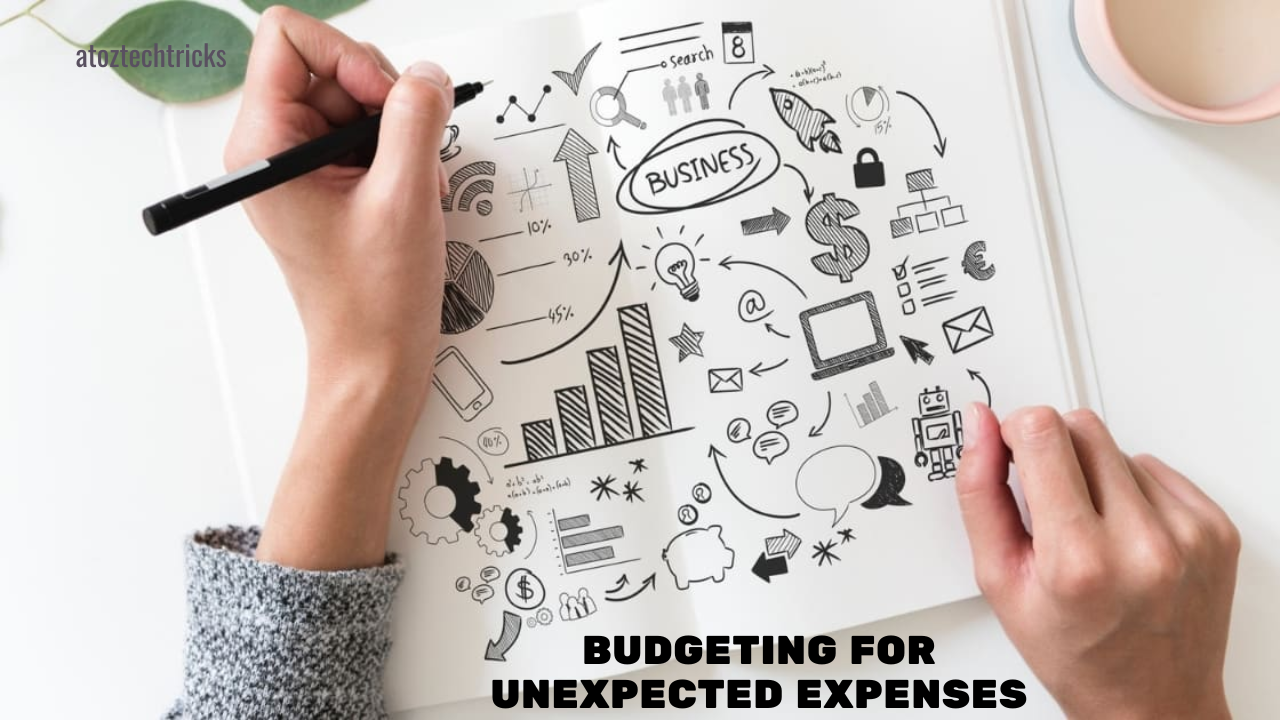How to Effectively Budget for Unexpected Expenses – Tips and Strategies
Life is unpredictable, and no matter how meticulously we plan our finances, unexpected expenses are bound to arise. Whether it’s a medical emergency, a car repair, or an unexpected job loss, being prepared for these financial surprises is crucial. Effective budgeting for unexpected expenses can help ensure that you stay on track with your financial goals without derailing your entire budget. This guide will walk you through the essentials of budgeting for unexpected expenses, including strategies, tips, and practical steps to safeguard your financial well-being.
Understanding Unexpected Expenses
Before diving into budgeting strategies, it’s essential to understand what constitutes an unexpected expense. These are costs that arise suddenly and weren’t planned for in your regular budget. Examples include:
- Medical Emergencies: Unexpected health issues or accidents can lead to significant medical bills.
- Car Repairs: Mechanical failures or accidents can result in substantial repair costs.
- Home Repairs: Issues like a broken furnace, leaking roof, or plumbing problems can be costly.
- Job Loss: Losing your job can lead to a sudden loss of income and increased expenses.
- Family Emergencies: Situations like a relative needing financial support can arise.
Understanding these potential expenses helps in creating a budget that is resilient and flexible enough to handle financial shocks.
The Importance of an Emergency Fund
One of the most effective ways to manage unexpected expenses is by maintaining an emergency fund. An emergency fund is a savings account specifically set aside for unforeseen expenses. Here’s why it’s crucial:
1. Financial Cushion
An emergency fund provides a financial cushion that can absorb unexpected costs without disrupting your regular budget. This cushion ensures that you can handle emergencies without relying on credit cards or loans.
2. Peace of Mind
Knowing that you have a financial safety net can reduce stress and anxiety related to unforeseen expenses. It provides peace of mind, allowing you to focus on resolving the issue rather than worrying about how to pay for it.
3. Avoiding Debt
Without an emergency fund, unexpected expenses may force you to use credit cards or take out loans, leading to debt accumulation. An emergency fund helps you avoid this scenario by providing ready cash for emergencies.
How Much Should You Save?
Determining the right amount to save in your emergency fund can vary based on personal circumstances, but a general rule of thumb is to aim for three to six months’ worth of living expenses. This amount can cover most unexpected expenses and provide a buffer during periods of income disruption.
Calculating Your Needs
To calculate how much you should save, follow these steps:
- Calculate Monthly Expenses: Add up your monthly expenses, including rent/mortgage, utilities, groceries, transportation, insurance, and other necessities.
- Multiply by Number of Months: Multiply your monthly expenses by three to six months to determine your target emergency fund amount.
For example, if your monthly expenses total $3,000, an emergency fund of $9,000 to $18,000 would be a good target.
Steps to Build Your Emergency Fund
Building an emergency fund takes time and discipline, but following these steps can make the process more manageable:
1. Set a Savings Goal
Define a clear savings goal based on the calculation of your needs. Having a specific target will help you stay motivated and focused.
2. Create a Budget
Incorporate your emergency fund savings into your monthly budget. Allocate a portion of your income specifically for this fund. This could be a fixed amount or a percentage of your monthly income.
3. Open a Separate Savings Account
Open a separate savings account for your emergency fund. This account should be easily accessible but separate from your regular checking and savings accounts to reduce the temptation to dip into it for non-emergencies.
4. Automate Your Savings
Set up automatic transfers from your checking account to your emergency fund savings account. Automating your savings ensures consistent contributions and helps you stay on track.
5. Review and Adjust
Periodically review your emergency fund and adjust the amount if necessary. As your income and expenses change, your savings goals may need to be updated.
Budgeting Techniques for Unexpected Expenses
In addition to having an emergency fund, employing effective budgeting techniques can help you manage unexpected expenses more efficiently. Here are some strategies to consider:
1. Use a Zero-Based Budget
A zero-based budget involves allocating every dollar of your income to specific expenses, savings, or debt repayment so that your income minus your expenses equals zero. This method ensures that you are intentional about where your money goes and can help you identify areas where you can cut back to save for unexpected expenses.
2. Track Your Spending
Regularly tracking your spending helps you understand where your money is going and identify areas where you can adjust your budget. Use budgeting apps or tools to monitor your expenses and make necessary changes to accommodate unexpected costs.
3. Prioritize Essential Expenses
When faced with unexpected expenses, prioritize essential costs such as housing, utilities, and food. Ensure that these critical expenses are covered before addressing non-essential items.
4. Build Flexibility into Your Budget
Allow for some flexibility in your budget to accommodate unexpected expenses. Allocate a portion of your budget for discretionary spending or miscellaneous costs that can be adjusted when needed.
5. Plan for Irregular Expenses
In addition to unexpected expenses, plan for irregular but anticipated expenses such as annual insurance premiums or car maintenance. Set aside funds each month to cover these costs when they arise.
Dealing with Unexpected Expenses: Practical Tips
When unexpected expenses occur, handling them effectively requires a thoughtful approach. Here are some practical tips to manage these situations:
1. Assess the Situation
Evaluate the nature and urgency of the expense. Determine whether it requires immediate attention or if it can be addressed later. Prioritize expenses based on their impact on your financial stability and well-being.
2. Review Your Budget
Revisit your budget to see if adjustments can be made to accommodate the unexpected expense. Look for areas where you can temporarily reduce spending or reallocate funds to cover the cost.
3. Explore Payment Options
If the expense is significant, explore different payment options. Consider negotiating payment terms, using a payment plan, or seeking financial assistance if necessary. Avoid using high-interest credit cards or loans if possible.
4. Seek Support
If you are struggling to manage unexpected expenses, seek support from family, friends, or financial advisors. They may provide guidance, resources, or assistance to help you navigate the situation.
5. Learn and Adjust
After dealing with an unexpected expense, reflect on the experience and learn from it. Adjust your budgeting and saving strategies to better prepare for future financial surprises.
Budgeting for unexpected expenses is a crucial aspect of maintaining financial stability and achieving long-term financial goals. By understanding the nature of unexpected costs, building an emergency fund, and employing effective budgeting techniques, you can better manage financial surprises and protect your financial well-being. Implementing these strategies will not only help you navigate unforeseen challenges but also provide peace of mind and confidence in your financial future.




Post Comment